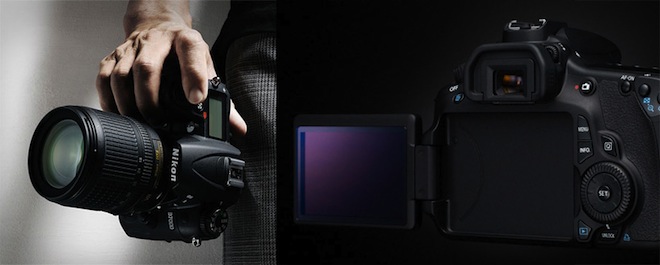
Who can be bothered with ND filters?
The attraction of a DSLR video is that you don’t need a crew of 10 and a crane to shoot stunning movies with one – it’s all about unburdening ourselves from carrying around tons of gear.
Also for the type of work that artists and video journalists need to do, when something happens right in front of you the last thing you need is to be fiddling with ND filters, let alone the million other pieces you might feel you need. Give me whatever is a fast 50mm standard lens on whatever body is best for video at the time, and I’m satisfied. Limitations are the lifeblood of creativity.
To maintain all that shallow depth of field that we love about DSLRs in video mode, it has been a stark choice between high shutter speeds and ND filters. You just can’t shoot at fast apertures which give a shallow depth of field, without compensating for over exposure with high shutter speeds or ND filters.
Vari-ND filters can work conveniently, but I’ve found them to really hurt colour and the image overall. Plus stepping rings are another throw back to the 90’s. Who wants to fiddle with stepping rings every time you change the lens, or buy 5 Vari-NDs of different sizes?
Yes hideously expensive vari-NDs exist with the usual slightly better performance for mega bucks more but I’d never endorse something out of most people’s reach, it is not what EOSHD.com is about.
With high shutter speeds, motion takes on a staccato feel, without the slightest hint of motion blur – even fast moving motorbikes for instance just jitter past like 2D cartoon characters, and it lacks that natural feel as our eyes see motion. In looks more like a Jackie Chan action scene, where one isn’t suitable.
$6000 put Sony’s way gives you a video camera with no built in ND filter. I feel we can do better than this.
I propose cut-ISOs – a way of making the sensor less sensitive to light. ISO 0 would be completely shut off to light. I am not sure what the exact steps, standards and numbers would be, but imagine it like 5,10,25 instead of starting at ISO 100.
Oddly the GH2’s minimum ISO is 160 and Nikons are ISO 200 with the ability to extend that lower. Most Canons can be underclocked to ISO 50. But it’s an area hardly ever spoken about and almost universally ignored, and they don’t go low enough to replace NDs anyway.
Ideally for video an exposure in good light should be made at 1/50, with the lens aperture used to control depth of field.
A Voigtlander 25mm F0.95 for instance looks beautiful at F0.95 but good luck trying to shoot in daylight with one at 1/50! It’d be necessary to go as high as 1/4000 with that kind of bright aperture.
Wouldn’t it be great to just dial in a lower cut-ISO to return the exposure to normal, rather than change the shutter speed?
Why don’t we have this feature?
It also benefits stills photographers who’d be able to use slow shutter speeds on a tripod to blur motion in daylight whilst maintaining a shallow depth of field, a proper exposure and avoiding the need for ND filters.
ND filters are outdated technology, and we don’t want them any more.
I have a feeling however that camera manufacturers are under pressure not to kill off ND filters. Hoya (owners of Pentax) for instance would never agree to such a move. There is about as much chance of a Pentax DSLR getting a digital ND filter via ISO settings as there is of Knut the polar bear joining an Olympic bobsleigh team… especially now.
Sony say the reason the FS100 at $6000 (£5000 in the UK – they have Bernard Madoff doing their currency conversion rates) does not have a built in ND filter is because the short flange back of the e-mount cannot fit one in.
That’s a good excuse, but also I feel something of a missed opportunity to develop a digital equivalent. Its not as if a camera like that suddenly doesn’t need an ND filter. You design out the problem, not ignore it.
We want cut-ISOs.


